

Damion Smy
Boxy new KGM Musso unveiled to take on HiLux and Ranger ahead of Australian launch
7 Hours Ago
The new Crosstrek picks up where the XV left off, but with added polish and tech that makes it a great new option for the adventurous.
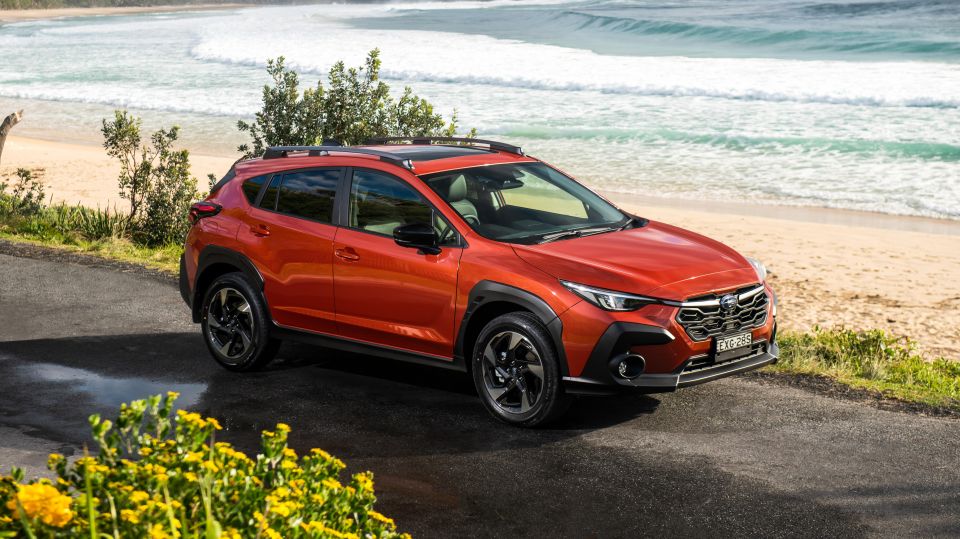
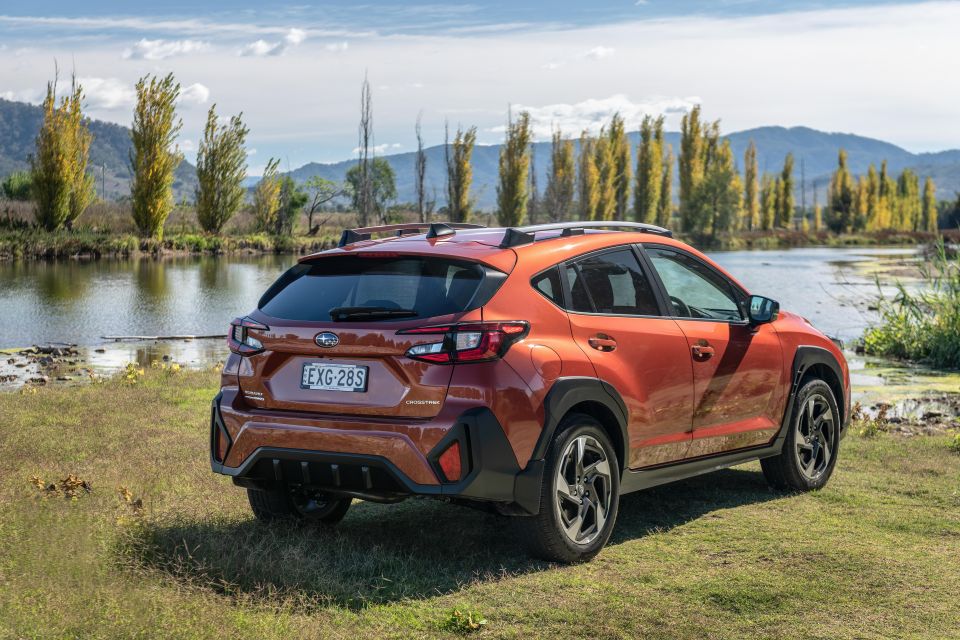

Marketplace Editor

Marketplace Editor


Marketplace Editor

Marketplace Editor
Where expert car reviews meet expert car buying – CarExpert gives you trusted advice, personalised service and real savings on your next new car.
The Subaru XV is dead… Long live the Subaru Crosstrek.

Well, kinda. The Crosstrek name has been used abroad for previous iterations of our XV for years, but now Subaru has decided to unify the naming of its smallest crossover across the world.
10 years have passed since the original Impreza-based XV first launched in Australia, and over 100,000 have been sold Down Under in that time – Subaru expects the Crosstrek to pick up where the XV left off in terms of popularity, too.
The new name brings with it a heavily revised take on a tried and tested formula, with a new design inspired by the 2019 VIZIV Adrenaline concept and an overhauled interior to match the latest models in Subaru’s range.
Under the skin there’s a revised platform that’s been honed for better refinement, revised versions of the old car’s four-cylinder powertrains, and a slightly rejigged range with more standard equipment across the board.
It’s a long-awaited overhaul for the XV/Crosstrek, which is one of the Japanese brand’s most popular vehicles in Australia.

The importance of the Crosstrek is amplified by the rollout of Subaru’s new compact family, with the Crosstrek making it to market well before the related Impreza hatchback rather than the other way around for the first time.
Even late in its life, the XV was Subaru’s third best-seller behind the larger Forester and Outback, and to the end of April 2023 has returned over 1400 registrations in runout.
Does the Crosstrek have what it takes to fill the big shoes of its successful forebears and take on the best of the best in Australia’s hotly contested small SUV segment?
The new-generation Crosstrek line-up kicks off at $34,990 before on-road costs for the entry-level AWD 2.0L, and tops out at $45,090 plus on-roads for the flagship AWD Hybrid S.
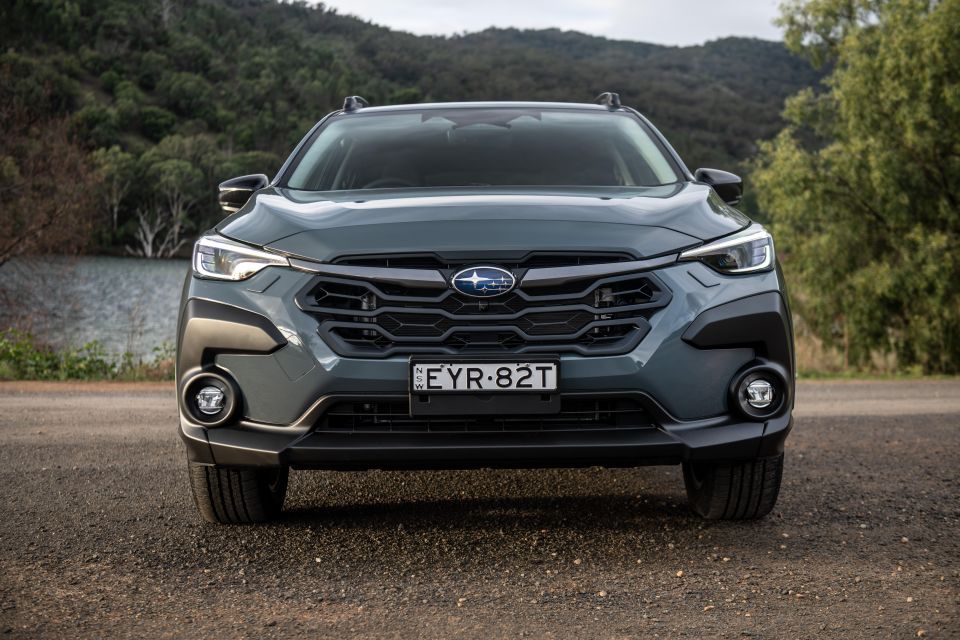
Depending on the variant you choose, the Crosstrek carries an $1800-$3000 premium compared to the equivalent previous-generation car, while hybrids command a $3600 increase over the equivalent petrol model.
Even with the various price rises, the Crosstrek remains pretty competitive for the class, especially given the level of equipment from the base level as well as standard all-wheel drive across the range.
Key rivals include the Toyota Corolla Cross (from $33,000), Jeep Compass (from $41,400), Mazda CX-30 (from $30,210), and Volkswagen T-Roc (from $37,100).
Mind you, all of these mentioned rivals start with two-wheel drive, with all-wheel drive asking for substantially more than the quoted opening prices.
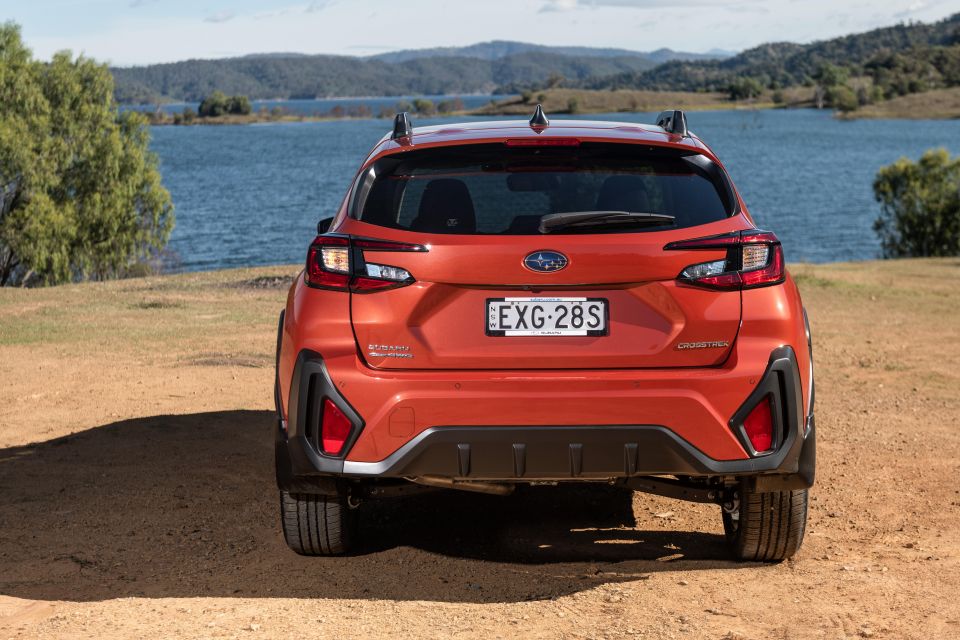
2023 Subaru Crosstrek pricing:
Prices exclude on-road costs
Buy your new car without the stress. It's fast, simple and completely free.

Great service from Travis and team, second time I have used this business would not hesitate to recommend them to anyone
Craig C.
Purchased a Ford Ranger in Sunshine Coast, QLD
CarExpert helped Craig save thousands on his Ford Ranger, now let us save you on your next new car.
Find a dealThis is arguably where the old one needed the most work – and Subaru has delivered, mostly.
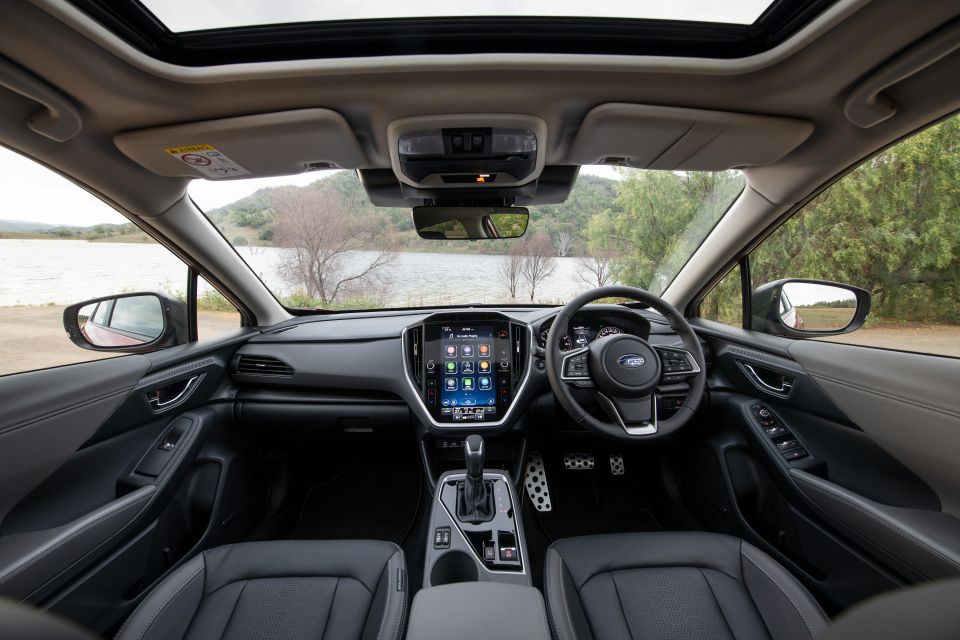
You can hop into the new Crosstrek after sitting in the latest Outback and WRX and immediately feel at home, such are the similarities across Subaru’s latest models.
The upright 11.6-inch touchscreen infotainment system is the centrepiece, and comes standard across the range with wireless Apple CarPlay and Android Auto. If you want embedded satellite navigation, you need to step up to the S models.
The interface is clean and easy to use, while the funky fonts and blue colour theme offer some visual pop.


Response to inputs and processing speeds are good, and it’s hooked up to decent audio systems regardless of which variant to you choose.
The standard six-speaker system in the 2.0L and 2.0R is already pretty good, with clear sound and little distortion or vibrations when you dial it up.
If you opt for the 10-speaker Harman Kardon system in the S grades there’s an added depth and clarity which is noticeable if you listen back to back.
While the climate control menu is relegated to the touchscreen, there are physical temperature controls and the HVAC widget is permanently located at the base of the display – definitely one of the better implementations.

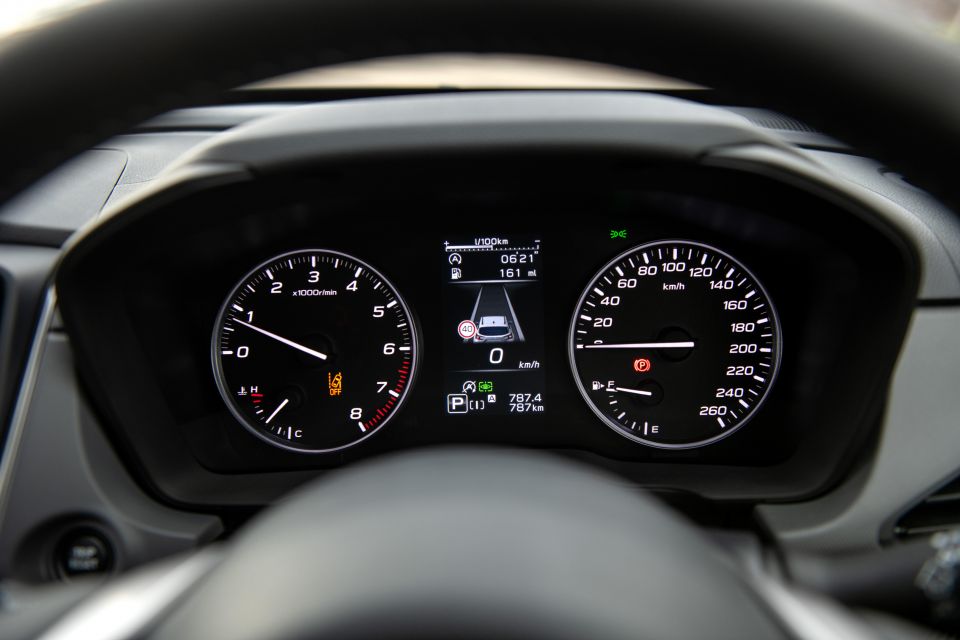
Comfort is pretty good for the driver and passenger. We spent our time in the mid-spec 2.0R and top-spec 2.0S models at launch, and found the R’s ‘premium cloth trim’ with electric driver’s seat adjustment and heating to be the preferred pew for outright comfort.
The steering wheel is trimmed in a hardy, grained leather that while not soft and supple like other vehicles in the segment, is grippy and well-suited to the Subaru’s more adventurous pitch. The multifunction switchgear is chunky and well laid out, too.
Ahead of the driver you won’t find a flash all-digital cluster, but the classic gauges flanking a colour supervision display look just fine, and will no doubt be favoured by the more traditional crowd.
I also like the sports pedals in the R and S grades, which are a nice touch.


The second row of seating has never been an XV strength, given it’s more of a hatchback on stilts rather than a more bespoke SUV design that’s been packaged as such.
Leg and knee room are adequate but won’t challenge class leaders like the GWM Haval Jolion or Kia Seltos, and the Crosstrek continues to lack rear air vents. There are, however, USB-A and USB-C charging points to keep devices juiced.
Headroom is fine, but the skinny body and large driveline hump in the floor impede on rear-centre passenger space. This will seat four fine, and can handle child seats thanks to top-tether points across all three seats and ISOFIX anchors on the outboard positions.
If you are planning to carry kiddies often, the rising window line doesn’t give the best view out for smaller children – but it’s no Toyota C-HR.
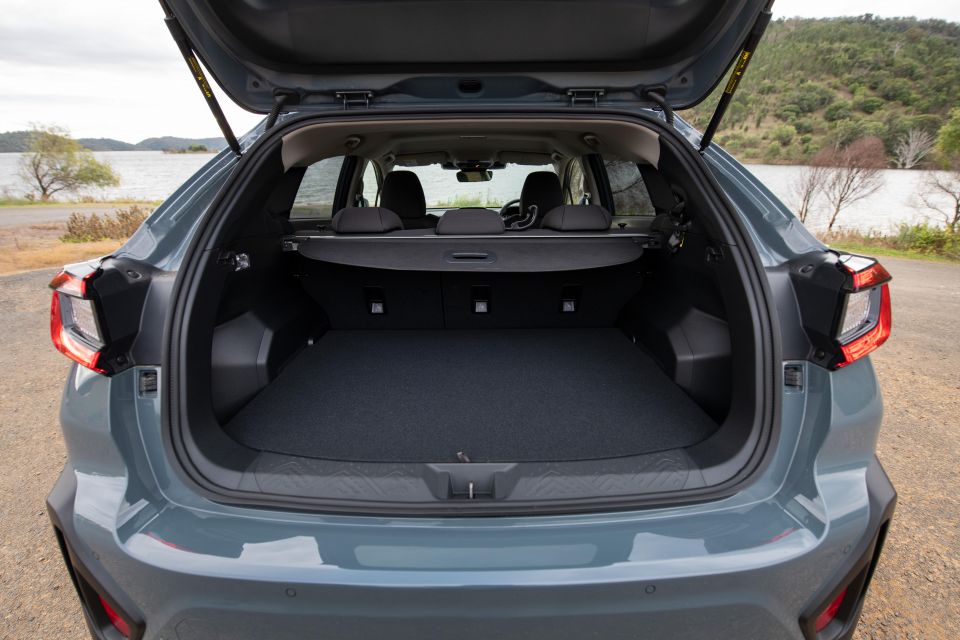
Less impressive again is the boot area, which remains one of the smallest in class.
Subaru quotes a measly 291 litres with the rear seats up, and 883L with them folded. I assume this is to the window line or the top of the seat backs, as there’s also a 1278L capacity quoted when measured to the ceiling.
It’s well off the likes of the Corolla Cross (380-446L), and it can’t even match the Mazda CX-30 (317L).
As with the outgoing XV, the Crosstrek offers two powertrains.
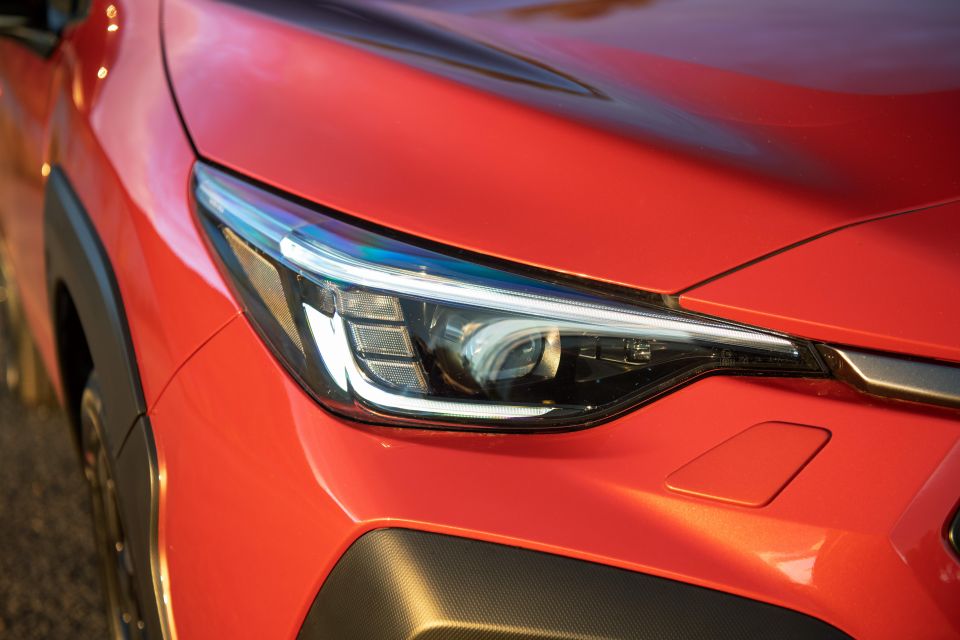
First is the standard 2.0-litre Boxer petrol, which generates 115kW (6000rpm) and 196Nm (4000rpm). Subaru says this engine has been “enhanced” for this new generation, though stops short of the full details.
There’s also the 2.0-litre e-Boxer Hybrid, which combines the standard engine with a 12.3kW/66Nm electric motor and small lithium-ion battery for improved fuel economy. Outputs for the Boxer engine are rated at 110kW (5800-6000rpm) and 196Nm (4000rpm).
Subaru claims combined fuel economy of 7.2L per 100km for the standard Crosstrek petrol, while the e-Boxer Hybrid drops that to 6.5L per 100km. The fuel tank measures a large-for-segment 63 litres for the petrol, and 48 litres for the hybrid.
CO2 emissions for the Petrol and Hybrid are quoted at 165g/km and 147g/km respectively. Both power units meet Euro 6b emissions standards, and are tuned to run on regular 91 RON unleaded fuel.
With trailer brakes, you’ll be able to tow up to 1400kg in the petrol Crosstrek, with the tow ball download maximum quoted as 140kg. The Hybrid drops that to 1270kg.
The Crosstrek sticks to the successful formula laid down by its predecessors, and polishes it in various areas.
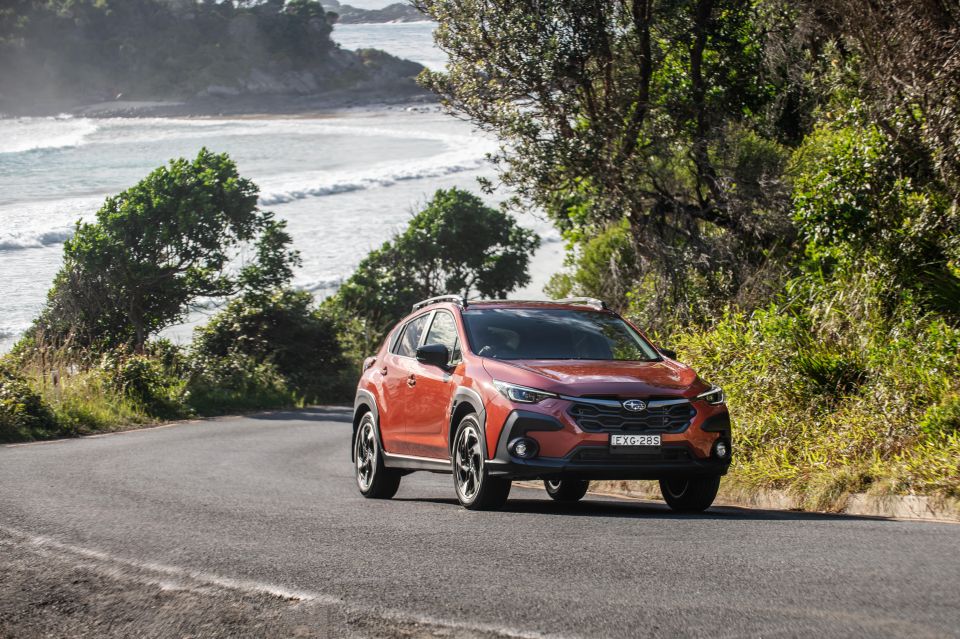
Tota Skurai, performance planning and integration manager at Subaru Global’s engineering division took us through a number of refinements made to the Crosstrek to improve occupant comfort.
Subaru employed various tactics like more roof damping, a new seat design, more structural adhesives and chassis framework continuity to enhance structural rigidity and reduce noise and vibrations in the cabin.
Having reviewed an XV during the late stages of 2022, I was surprised how far the Crosstrek has come without straying too far from the recipe that has made it so popular.
From the moment you hop in the driver’s seat and fire it up with that signature Boxer rumble, you notice the Crosstrek feels more insulated from the outside world and particularly the powertrain.
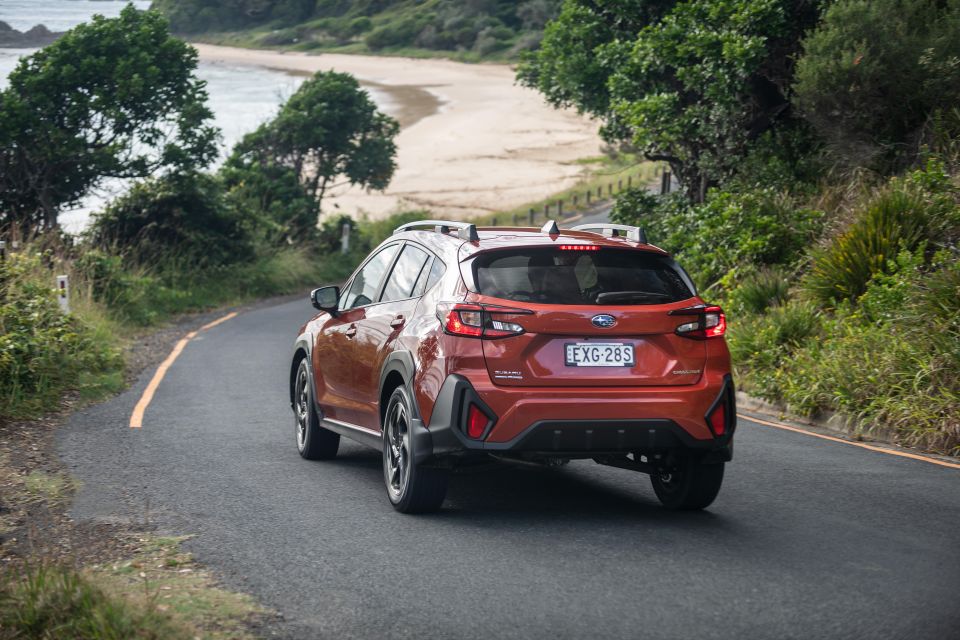
You’ll also notice the CVT has been refined to be more linear and auto-like in its response, whether you’re in town or on the highway. The Crosstrek builds revs more smoothly and will mimic shifts if you rev it out past 3000rpm, while noise intrusion from that 2.0-litre Boxer motor is impressively hushed.
There’s a manual mode and paddle shifters too, should you want to take control yourself. Props to Subaru for engineering the CVT to do a darn good job at simulating the shifts of a conventional automatic, too.
Around town the Subie feels right at home, with its compact hatchback dimensions and light, precise steering – courtesy of a new electric power steering rack from the WRX – making light work of the urban jungle.
There’s decent outward visibility, though there’s a thick C-pillar and a slim-ish rear window. Having the 360-degree camera system in the 2.0R and 2.0S makes parking even easier, but the stitched feeds can look a little distorted on the central display much like Volvo’s portrait-oriented system.
It irons out the lumps and bumps of urban roads better than the old car too. Where the XV was quite firm, this new one is that bit softer to take the edge of the sharper hits you find around Australian cities.
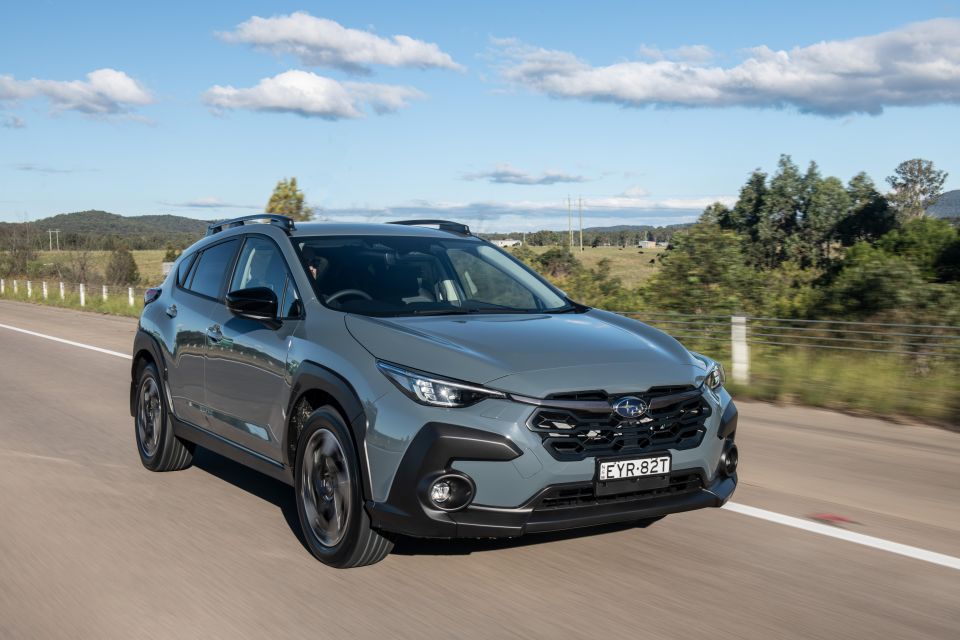
Where expert car reviews meet expert car buying – CarExpert gives you trusted advice, personalised service and real savings on your next new car.
That steering rack brings a real sense of accuracy and security when driving on the highway or up a winding country road. While pretty light, its quick ratio and direct feel give the driver a pretty good idea of what’s going on up front.
It’s obviously been tuned to offer the best comfort and ease of use when parking, but I much preferred the slightly heavier weight of the Sport setting using the SI-Drive button on the steering wheel. There’s a little WRX DNA dialled in there.
On the M1 Pacific Highway the Crosstrek happily sat at 110km/h with its adaptive cruise control and lane centring functions doing the bulk of the work. It was here I probably noticed one of the most marked developments over the previous generation.
The old car could feel a bit tinny on freeways and highways and would often have the engine roaring to life up inclines which transmitted quite a lot of noise and booming into the cabin – the Crosstrek is much better in this reagrd.
Don’t get me wrong, you can feel changes in road surface and you can hear what’s going on outside, particularly through the windows, but it’s a much more comfortable and relaxing place to spend time now.
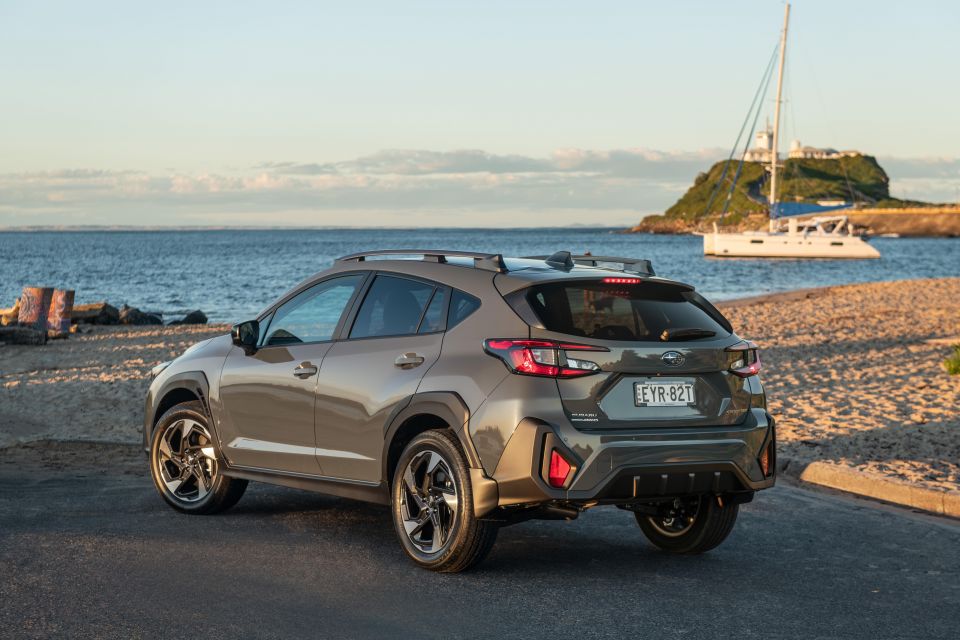
Up steeper hills at 110km/h the Crosstrek will rev up to 3000-4000rpm but you’d barely know without looking at the tacho, such are the gains in powertrain refinement. On flatter ground you’re cruising at barely 2000rpm at an indicated 110km/h.
The ride has improved. Where the old XV could be a little firm and upset by sharper hits, the Crosstrek adds another layer of compliance to again communicate what’s going on underneath without sending the impact through your bum.
Off the highway and on twistier country roads, the Crosstrek maintains that stability and security and can also be a little bit of fun, though is held back by its relatively mundane power unit.
There’s acres of grip courtesy of that full-time all-wheel drive system, which has been adjusted to a 60:40 front-rear torque split in this new generation compared to the 50:50 split from before. The new steering system and this all-wheel drive system work in concert to provide a fairly engaging drive at speed without encroaching on WRX territory.
It also keeps body roll to a minimum despite its elevated stance, which makes me keen to drive the new Impreza which is effectively the same car but noticeably lower to the ground.
I will also note that if you’re buying a Crosstrek to do a lot of touring, keep in mind that this won’t be the kind of car you can make quick highway overtakes in. On a couple of occasions on the drive it felt like the Crosstrek was really at its ceiling when trying to overtake at 100-110km/h.
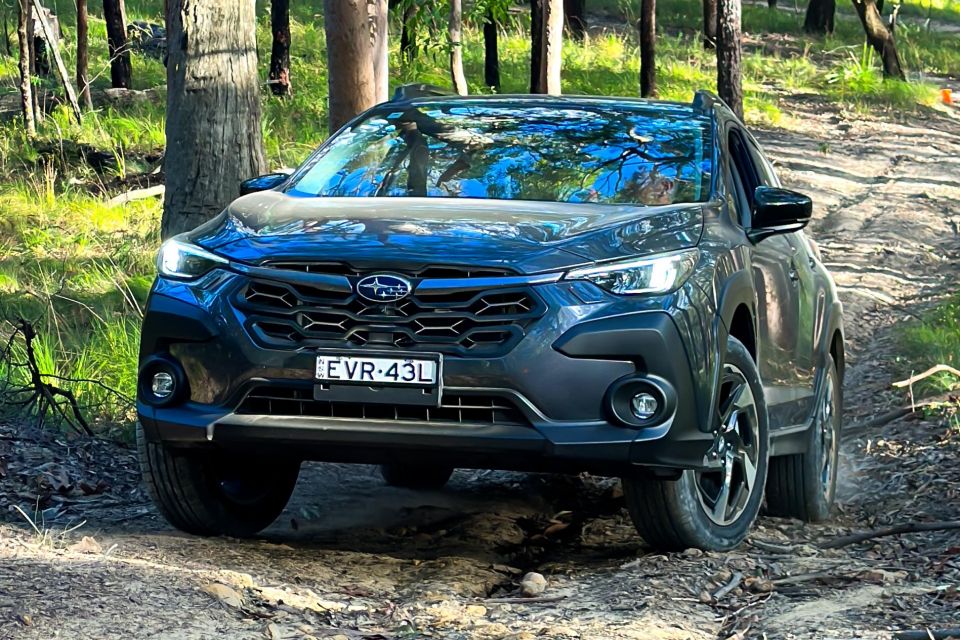
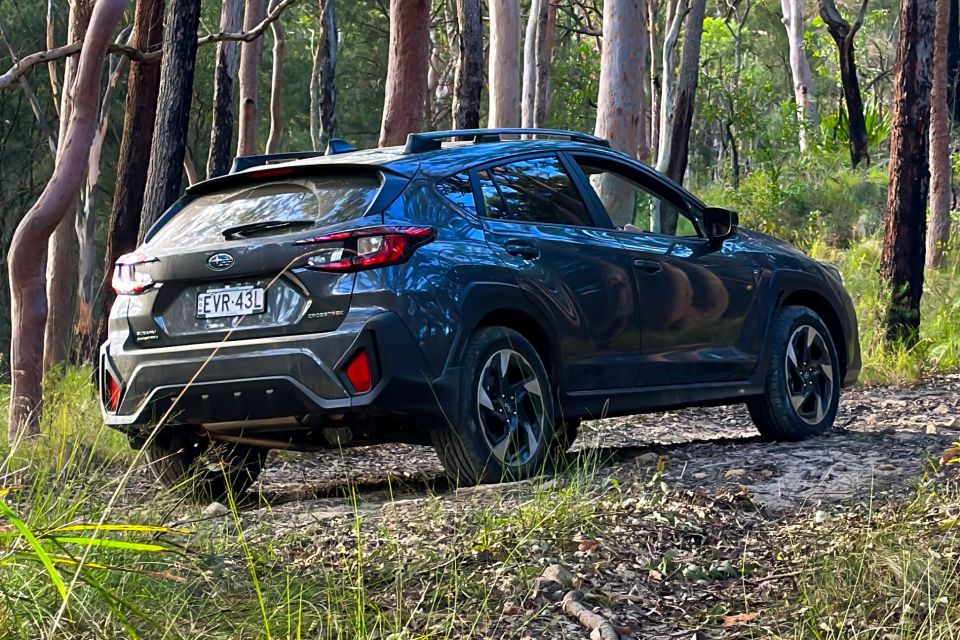
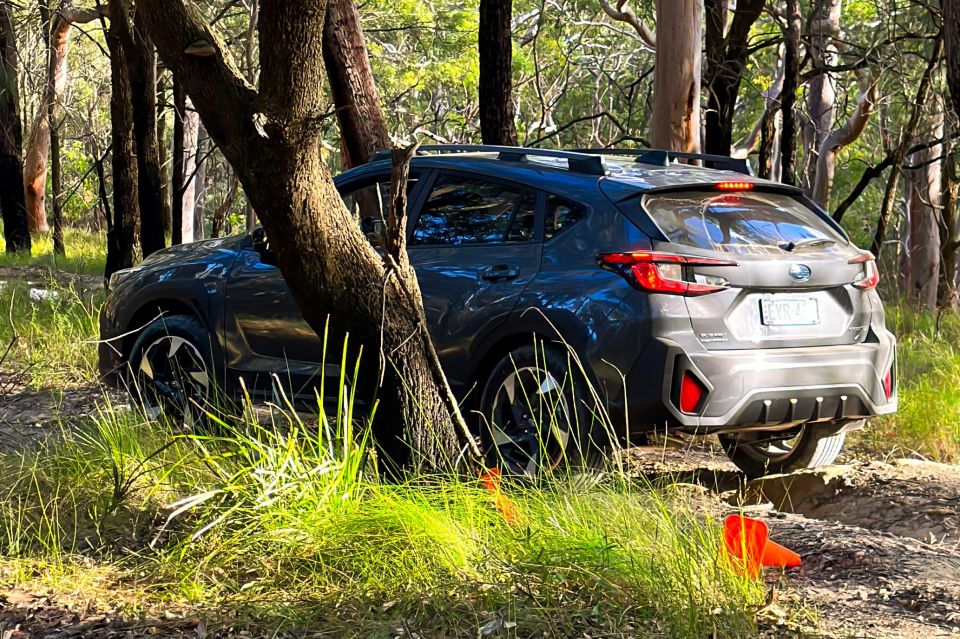
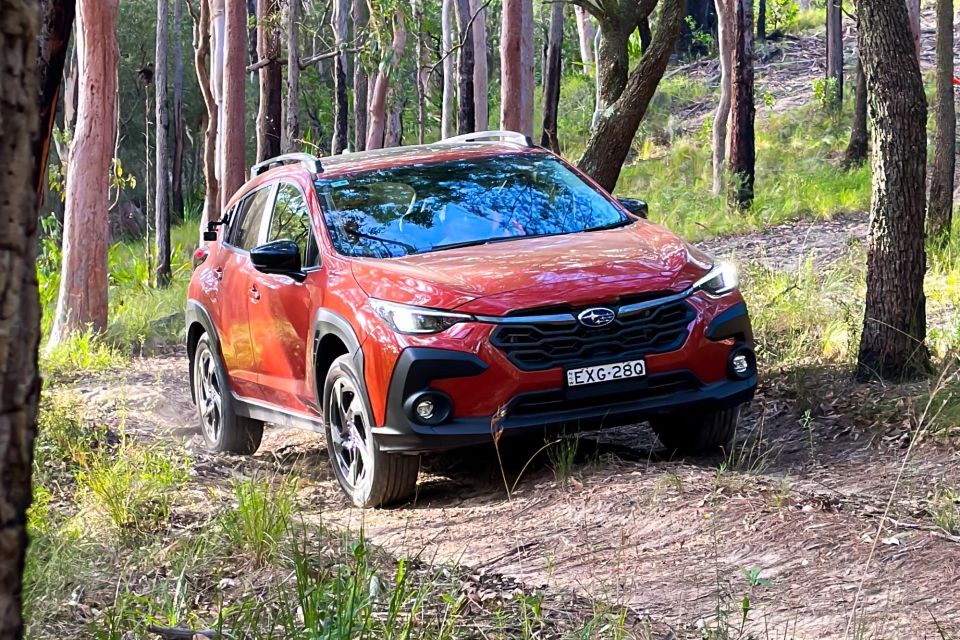
One of the Crosstrek’s big draw cards is the promise of off-road ability, so we took the little Subie off the beaten track as well.
We scaled some trails that would make most small SUVs sweat, but the Crosstrek’s healthy 220mm of ground clearance, X-Mode off-road settings and all-paw traction meant we could go further than you might think.
The ground clearance and short overhangs came in real handy on the more challenging trail up to the lunch spot, which included plenty of uneven surfaces, sharper dips and big rocks.
Standard hill descent control is activated whenever you engage X-Mode and are heading down a descent, and it smartly adjusts the set speed to whatever you last brake or accelerate to. It does a good job at keeping said set speed, too.
Sure this isn’t a proper 4×4, but then again other than a Suzuki Jimny what is for this kind of money? The Crosstrek will arguably go further than just about any rival will dare to travel – and we don’t even get the Wilderness version that was recently revealed for the US, though Subaru Australia is working hard for it.
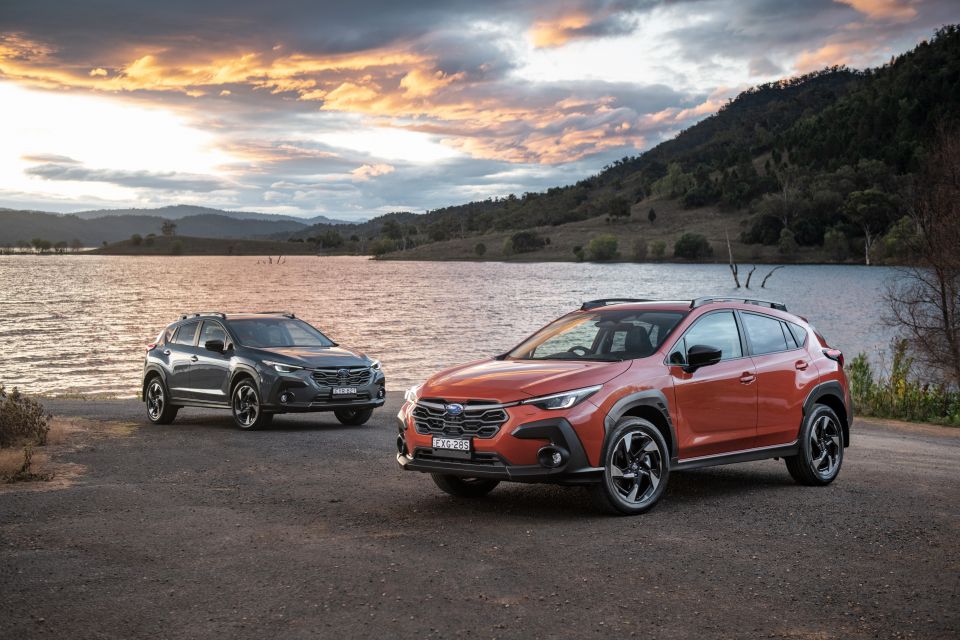
Crosstrek AWD 2.0L + Hybrid L highlights:
Performance
Exterior
Interior
Entertainment, Technology and Safety
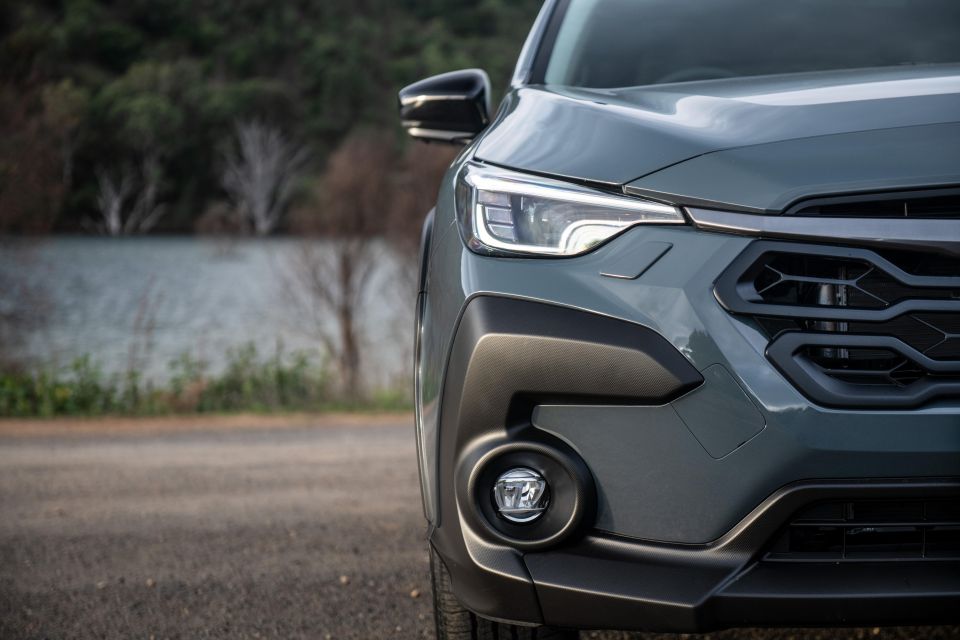

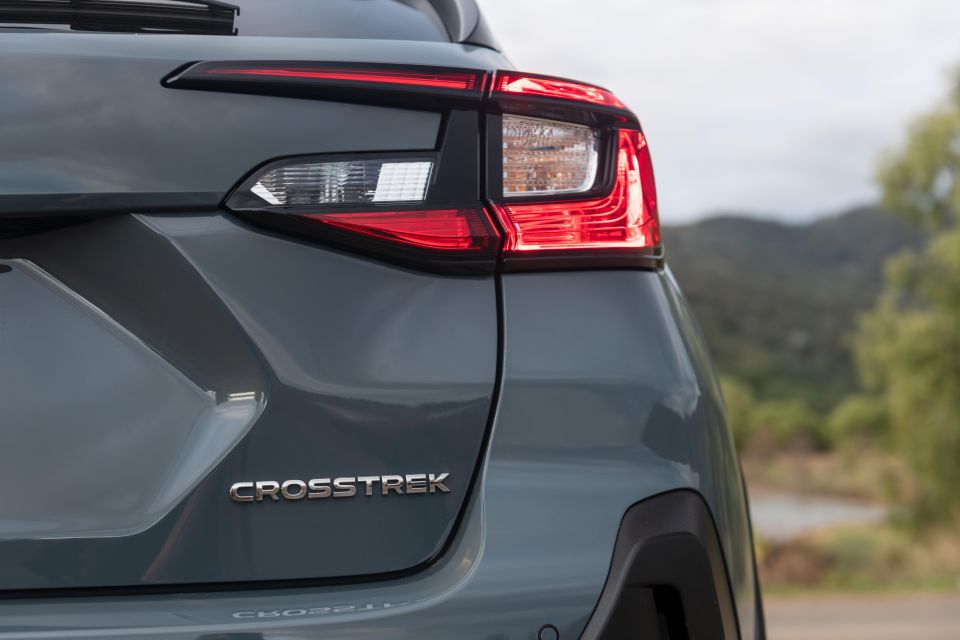

Crosstrek AWD 2.0R adds:
Performance
Exterior
Interior
Entertainment, Technology and Safety
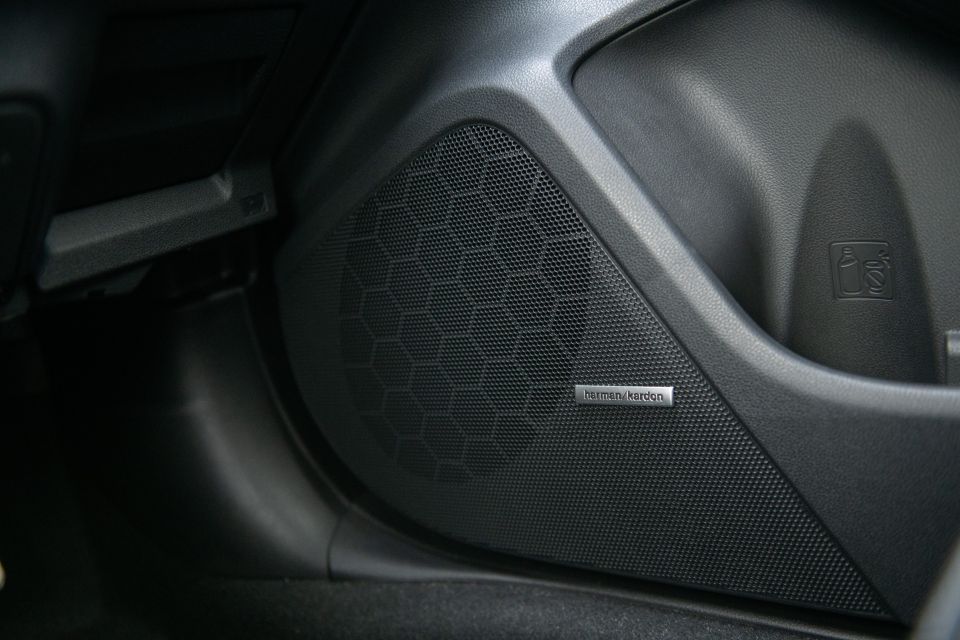
Crosstrek AWD 2.0S + Hybrid S adds:
Exterior
Interior
Entertainment, Technology and Safety
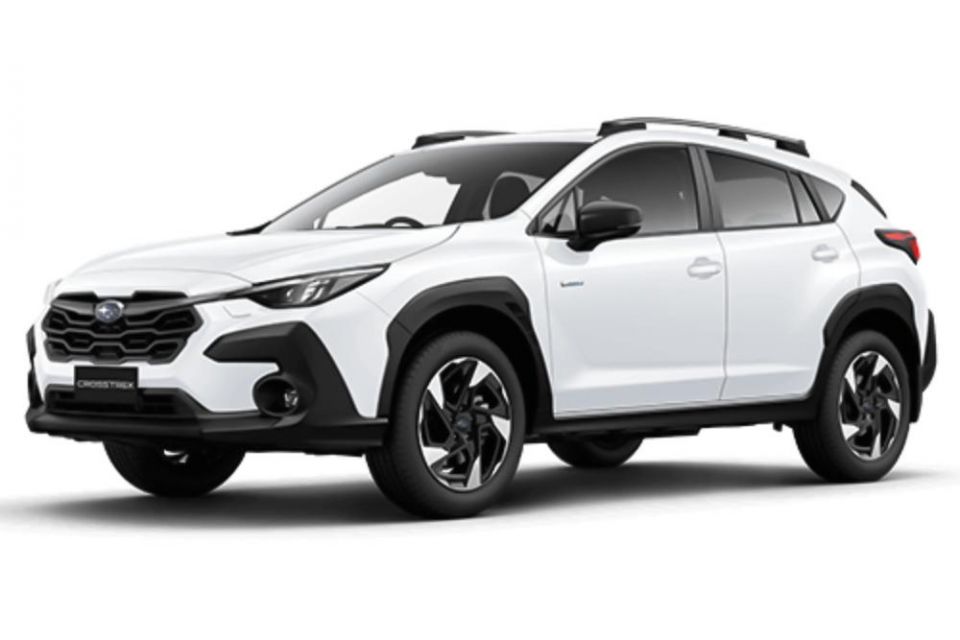
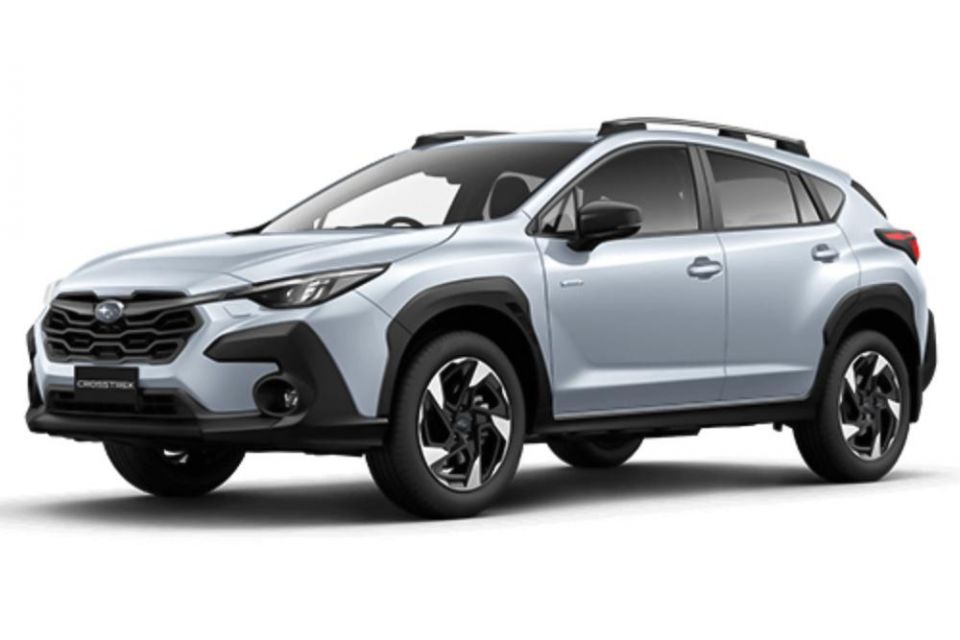
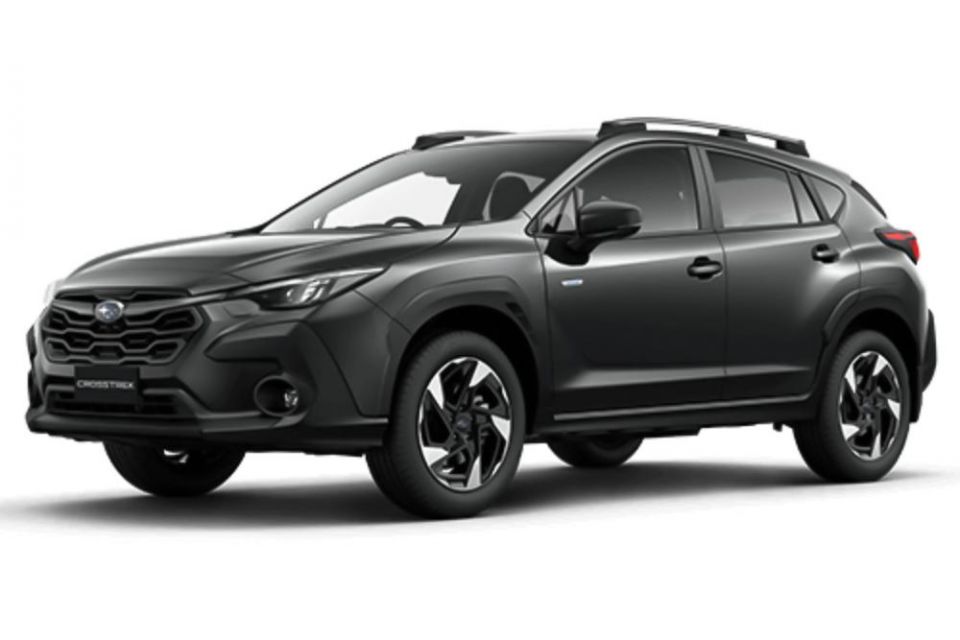
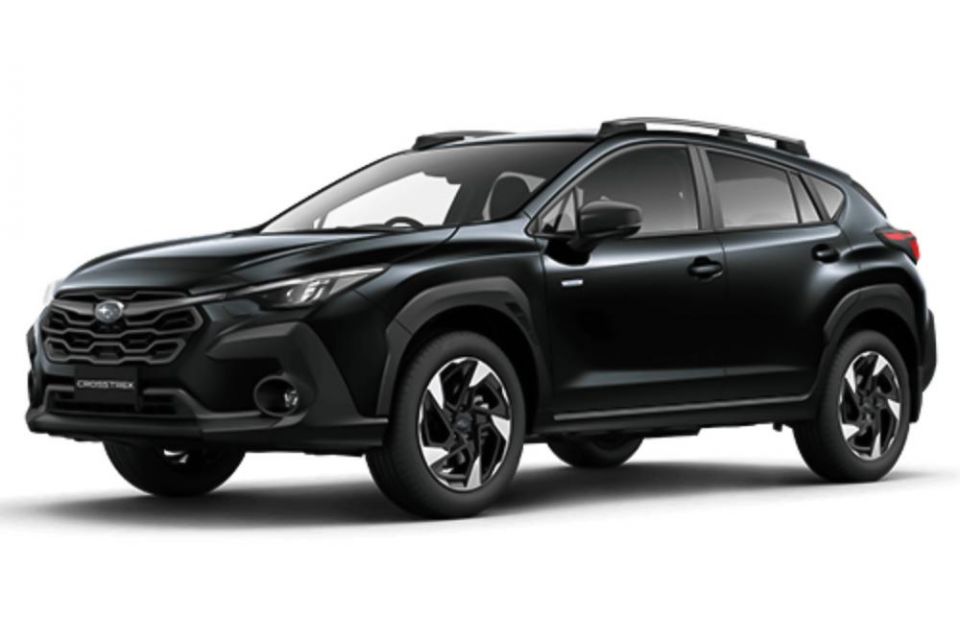
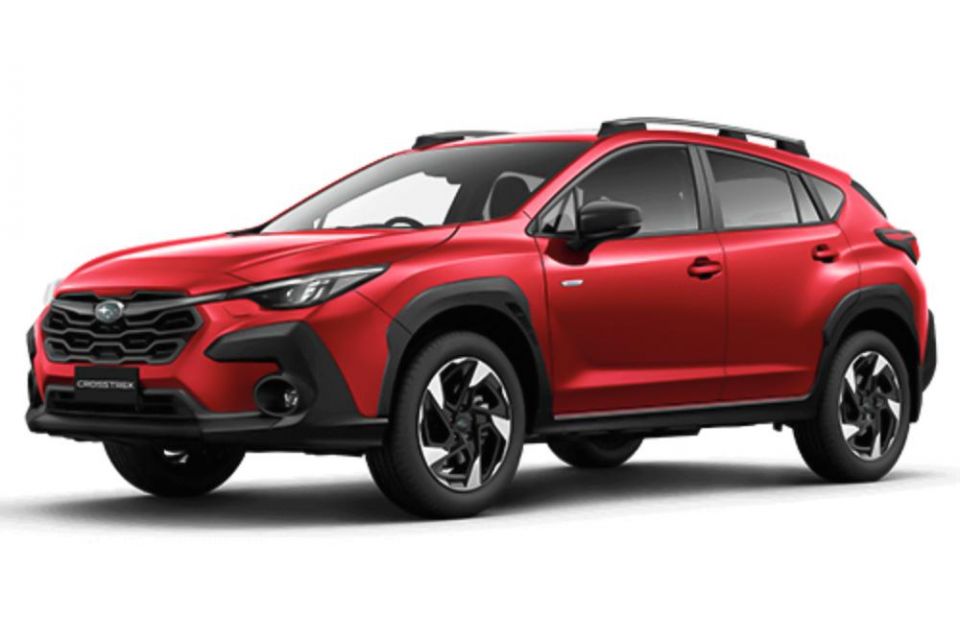

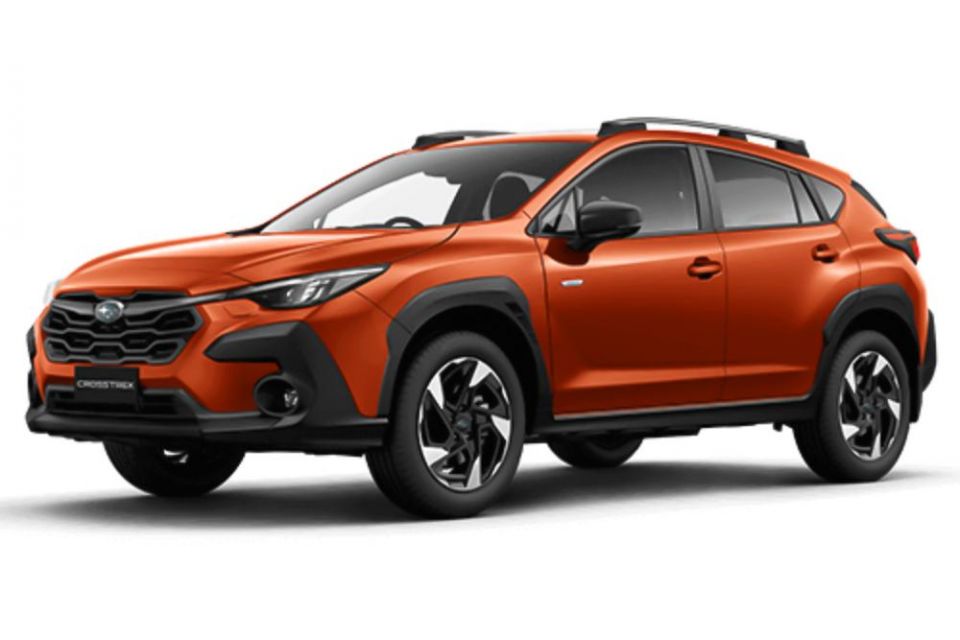
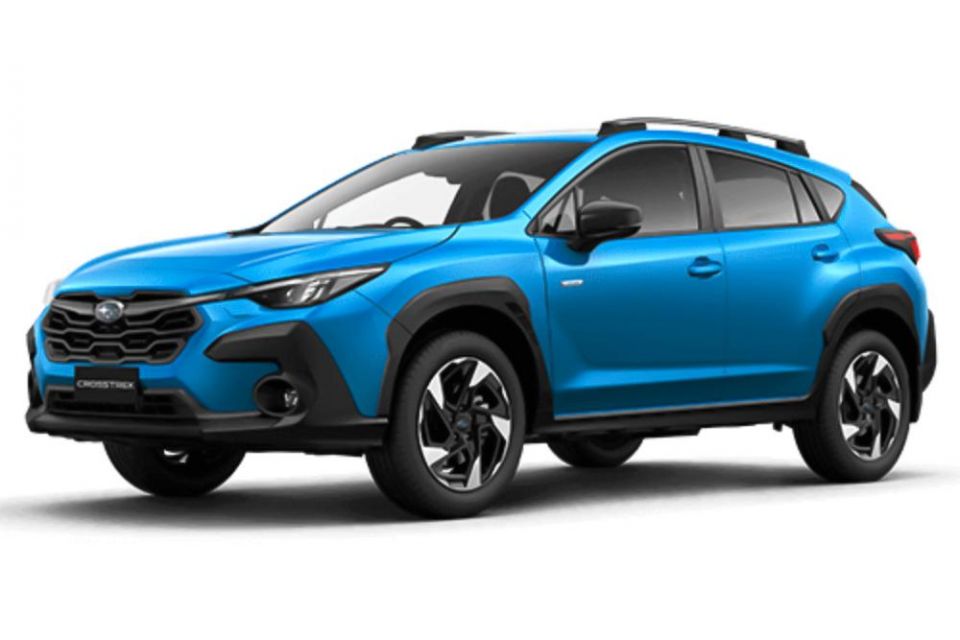
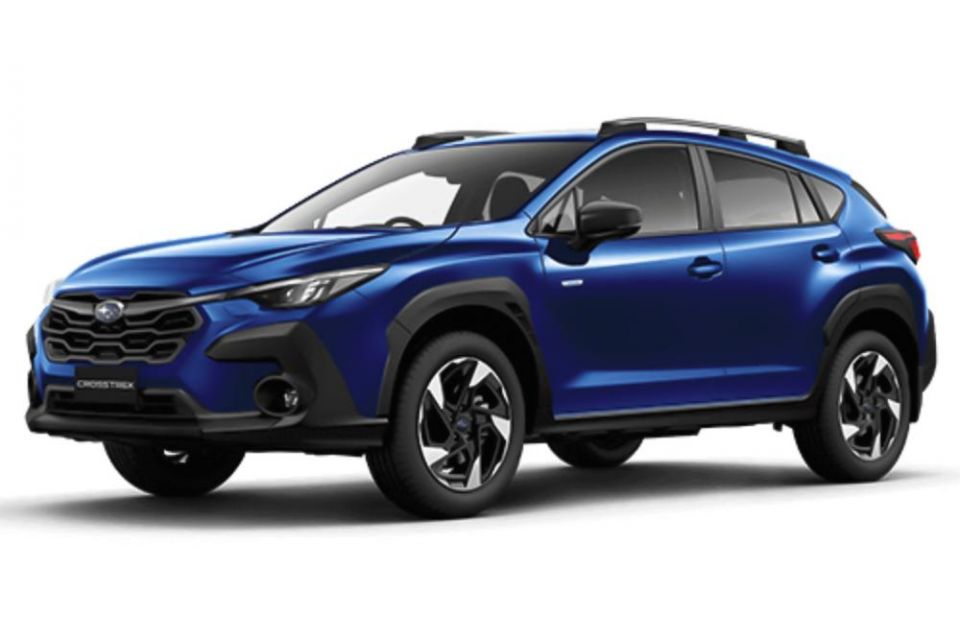
All exterior finishes are no-cost options
Upholsteries:
The 2023 Subaru Crosstrek is yet to be tested by ANCAP, and therefore is unrated.
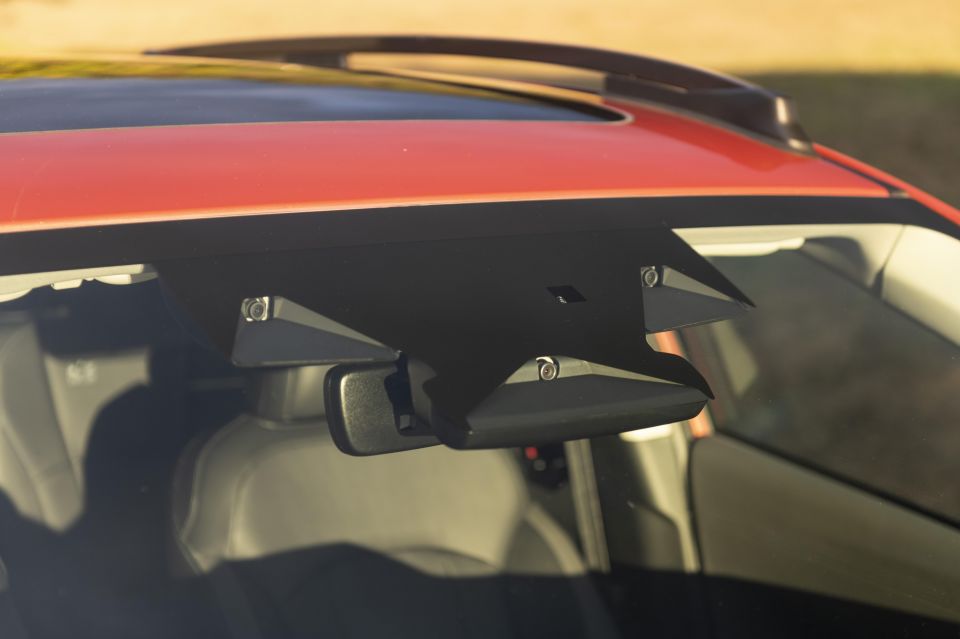
Standard safety features include:

Crosstrek 2.0R adds:
Considering the entire Subaru range wears five-star ANCAP and Euro NCAP safety ratings, we’d be surprised if the new Crosstrek didn’t achieve similar, given the common vehicle architecture and extensive suite of standard safety systems.
The Crosstrek is covered by Subaru Australia’s five-year, unlimited kilometre new vehicle warranty.
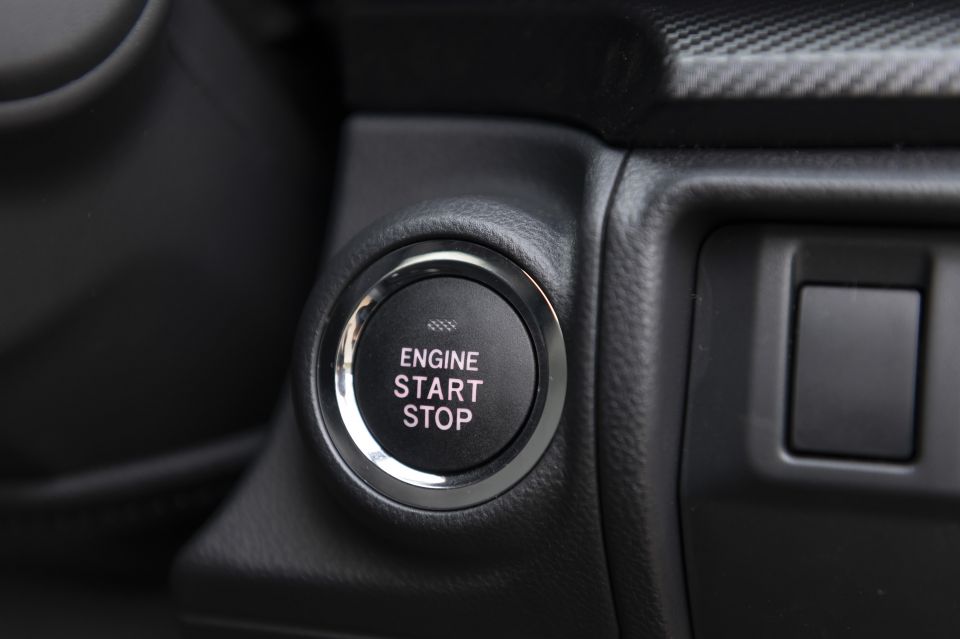
Buyers will also receive 12 months of Subaru Roadside Assistance with purchase.
Scheduled maintenance is required every 12 months or 15,000 kilometres – whichever comes first. Subaru offers five years of capped price servicing, which covers up to 75,000 kilometres.
The first five visits will set you back $346.25, $473,47, $420,60, $771.74 and $361.13 – for a total of $2372.19. It’s on the pricier side, but isn’t the dearest to maintain in the segment.
As for fuel consumption, we spent a lot of time behind the wheel on freeways and winding country highways, with a much lower ratio of urban environments than we presume most Crosstrek owners will typically spend their time.
The 2.0R and 2.0S both saw fuel consumption dip into the high 6s (indicated) during our launch drive loops, which is mighty impressive given there were plenty of hilly sections between Sydney and Newcastle which required a bit of throttle at 100-110km/h.
Add to that the standard petrol model’s 63-litre fuel tank, you’d almost be able to travel 1000km between fills based on that consumption rate. I’d be interested to try the e-Boxer Hybrid to see if the updated version can offer significant improvements to real-world economy – though the electrified version has a much smaller 48-litre tank.
In a world where everything seems to be more of the same, Subaru is carving its own path with the Crosstrek.

Yes it’s something we’ve seen before, but the fact it’s doubling down on its strengths and continuing to refine a proven formula is grounds for praise, and the proof is in the pudding.
The new Subaru Crosstrek – in petrol guise, at least – is a great option in the burgeoning small SUV segment if you want something that’s less about just the boxy SUV look and more about the benefits that come with owning a higher-riding, all-wheel drive vehicle. It’s basically an ‘Outback Jr’.
With a grippy all-wheel drive system, lofty running clearance and easy-to-use off-road tech, the Crosstrek is as at home in the city as it is on a country highway or up camping trails.
The Subaru’s slightly more rugged nature hasn’t come at the cost of everyday comfort and on-road dynamics. It’s the most polished Crosstrek/XV by some measure, and puts the Crosstrek back into contention with segment leaders while offering something a little different.
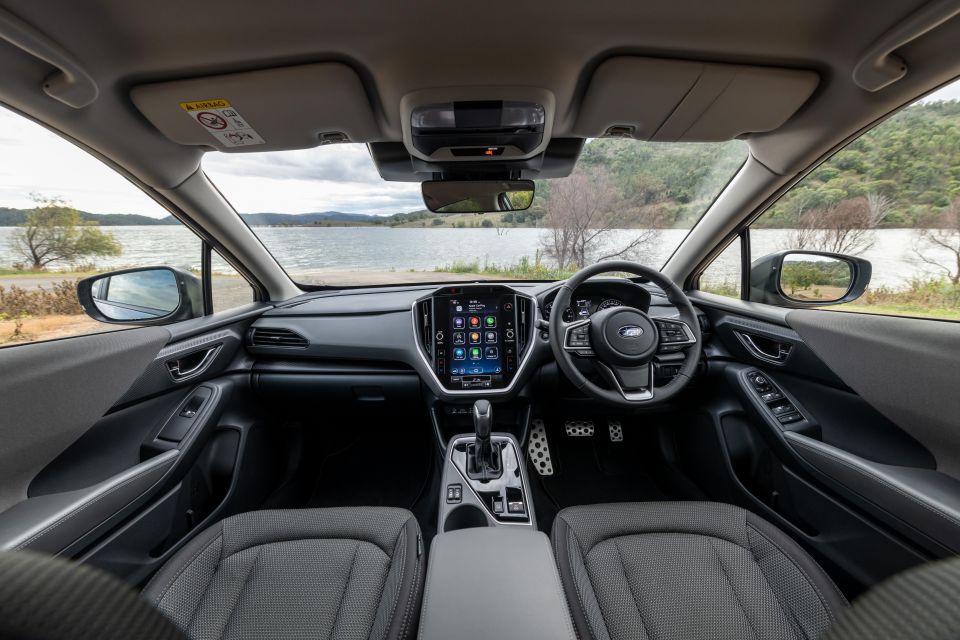
It’s nice to drive, it’s comfortable, it’s efficient, and it offers a big-car feel in a small package. The new range no longer forces you to spend top dollar to get desirable kit, and while the engine isn’t a powerhouse it’s been refined to the point where it’s not a huge sticking point like its predecessor and a whole bunch of conceptually similar alternatives.
That doesn’t mean it doesn’t come without some sore points. A turbocharged engine, or the Outback’s 2.5-litre atmo motor like available in the US model, would go a long way into improving it’s all-round touring abilities. Ditto the tiny boot, which means if you have a lot of stuff to carry regularly you might need to look at one of the company’s larger options.
I’d also be very interested to drive the new Crosstrek Hybrid, even though there doesn’t seem to be any major developments on paper.
If it’s improved in the way the standard petrol has it could be a much more compelling option given the sore lack of hybrid offerings in the segment outside of the Corolla Cross and Jolion, and that’s before you factor in the off-road element. Stay tuned for our first drive of that in the coming weeks.
Click the images for the full gallery
Where expert car reviews meet expert car buying – CarExpert gives you trusted advice, personalised service and real savings on your next new car.
James Wong is an automotive journalist and former PR consultant, recognised among Australia’s most prolific motoring writers.


Damion Smy
7 Hours Ago


Damion Smy
9 Hours Ago


Damion Smy
10 Hours Ago


Damion Smy
12 Hours Ago


Damion Smy
14 Hours Ago


Damion Smy
15 Hours Ago